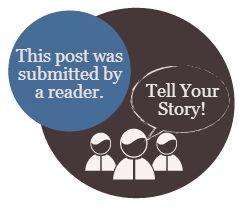
by Philip A. Kumin
Author’s Note: The following article was originally written in 1987. Immediately before the start of the Alternatives ’87 Conference, a Constitutional Convention was held for the National Mental Health Consumers’ Association.
Persons whose names I used are in the public domain regarding their status as patients.
. . . . . . . . . . . . . . . .
There have now been three annual national mental health primary consumer conferences which have been government funded. This year’s Conference, (Alternatives ’87), was held at Marshall University in Huntington, West Virginia, itself an attractive moderately sized college town located on the Ohio River and surrounded by mountains.
I should, perhaps, be biased in favor of the Alternatives ’85 Conference which I helped to organize here in Baltimore. This was, indeed, an historic occasion. However I would, (at this point,) have to say that probably this year’s Conference was as good if not better, (albeit in a somewhat different way,) than our Conference. Alternatives ’87 was certainly better than last year’s Conference in Cincinnati, where there was tremendous infighting between certain members of each national organization.
In fact, I think what made Alternatives ’87 so unique was the wonderful spirit
of respect and acceptance which I feel prevailed there. Rumors were circulating that the National Association of Psychiatric Survivors was officially boycotting the Conference, but these later proved not to be true. In fact there were quite a few N.A.P.S. members there, as well as those who are members of both organizations, and still those who belong only to the National Mental Health Consumers’ Association, yet constitute the more left wing faction of that organization. (Here’s where I fit in.) In other words, folks, there was a tremendous diversity of political belief again represented this year. And yet there was no fighting, no struggle whatsoever. George Ebert was there, (for whom I felt intense pride,) with his very attractive, (and politically dedicated) wife, whose first name escapes me now. But George was nice! He was terribly pleasant! I absolutely fell in love with the man! They brought this tremendous display of all the classic anti-psychiatry/anti-shock literature and paraphenalia, which they conveniently sandwiched in between a Project S.H.A.R.E. booth and an extensive display that the Mental Health Association of West Virginia put up, and proceeded to do a brisk business. Even a small display, (next to that of the National Mental Health Consumers’ Association,) about the National Alliance for the Mentally Ill was erected although this, unfortunately, sat on its own unattended and unmanned, (or unwomaned, what have you,) for some reason.
Probably the most soul-satisfying benefit of these Conferences each year is the effect they have on newcomers who attend for the first time. If you watch and observe the expressions on the faces of those new participants who are just discovering the self help & advocacy Movement for the first time, their responses are almost spiritual in some way. They are completely blown away by the proceedings, never having known anything like this existed. Even Bernie Elbinger of the Michigan Alliance for Alternatives to Psychiatry, in Detroit, (no conservative, he) admitted for lack of a better word, these Conferences are tremendously, “therapeutic.” My roommate was a 41 year old man, (bipolar depressive,) from Portland, Oregon who had been involved in some independent advocacy out there and through his contacts, got wind of the Conference at the last minute, but managed to get some funding to come anyway. We stayed up all night after our first day there, and talked. He was in a near-perpetual state of nirvana, he was so overwhelmed by the profundity of what he was in the midst of.
The Constitutional Convention went off without a hitch, thanks to the combined parliamentary techniques of chairperson Tom Posey, and assistants Joe Rogers and Jay Centifanti. Although jokes abounded about the United States Constitution taking less time to construct than ours we were, in fact, concluded within the 24 hour period allotted before the start of the Conference. I had, indeed, wanted to be present when the final rollcall was issued on the vote either in favor of, or opposed to, the acceptance of the last position paper drafted in committee. I wanted to be there when Tom Posey slammed his pair of scissors that he was using as a gavel, down on the podium and announced, “Ladies and Gentlemen, we have a Constituuuution,” at which point the delegates would have all thrown their hats in the air and cheered, as do the plebes each year upon graduation from the Naval Academy in Annapolis. Unfortunately I tired early, and went back to my dormitory room to sleep. But for those portions of the Convention at which I was present there really was, again, such a sense of history being made…
At this point, the national Movement’s most pressing need is for publicity. We are this tremendously profound and historic civil rights movement, (the ultimate one, we say) developing, organizing and growing right under America’s nose and yet, no one knows about us. It was tragically humorous when, after the acceptance of the draft position paper for the Finance Committee during the Convention the new chairperson noted, somewhat sadly, that we have no money. We were all terribly pleased in this regard to have Robert Emerick, associate professor of sociology at San Diego State University, with us. Professor Emerick is conducting a survey of political diversity within the Movement, the final results of which he hopes to publish in some social-scientific publication somewhere. Slowly but surely, other facets of the intellectual and academic communities are hearing about us.
My only wish for future Conferences is that registration and attendance for non-primary consumers be expanded. Salt Lake City in ’88!